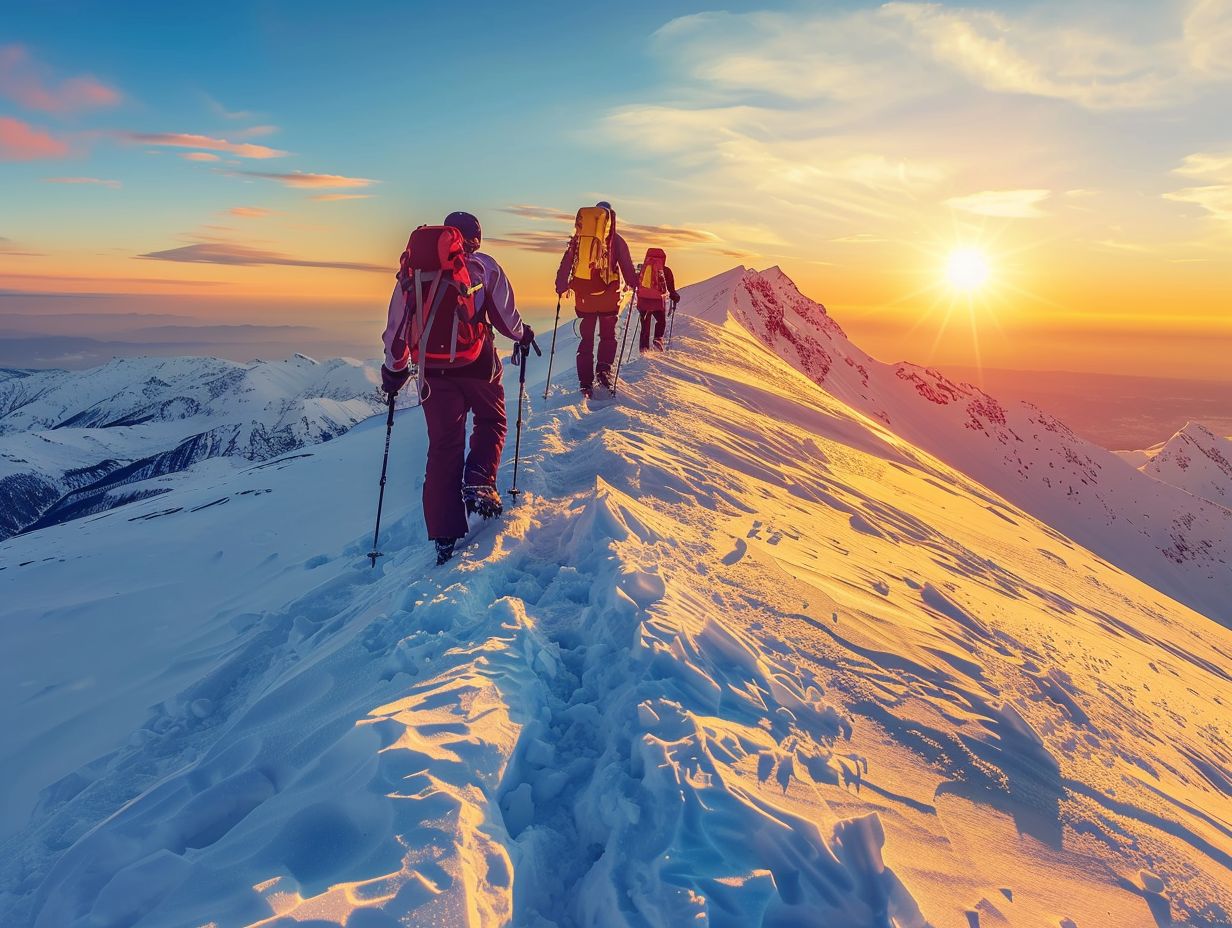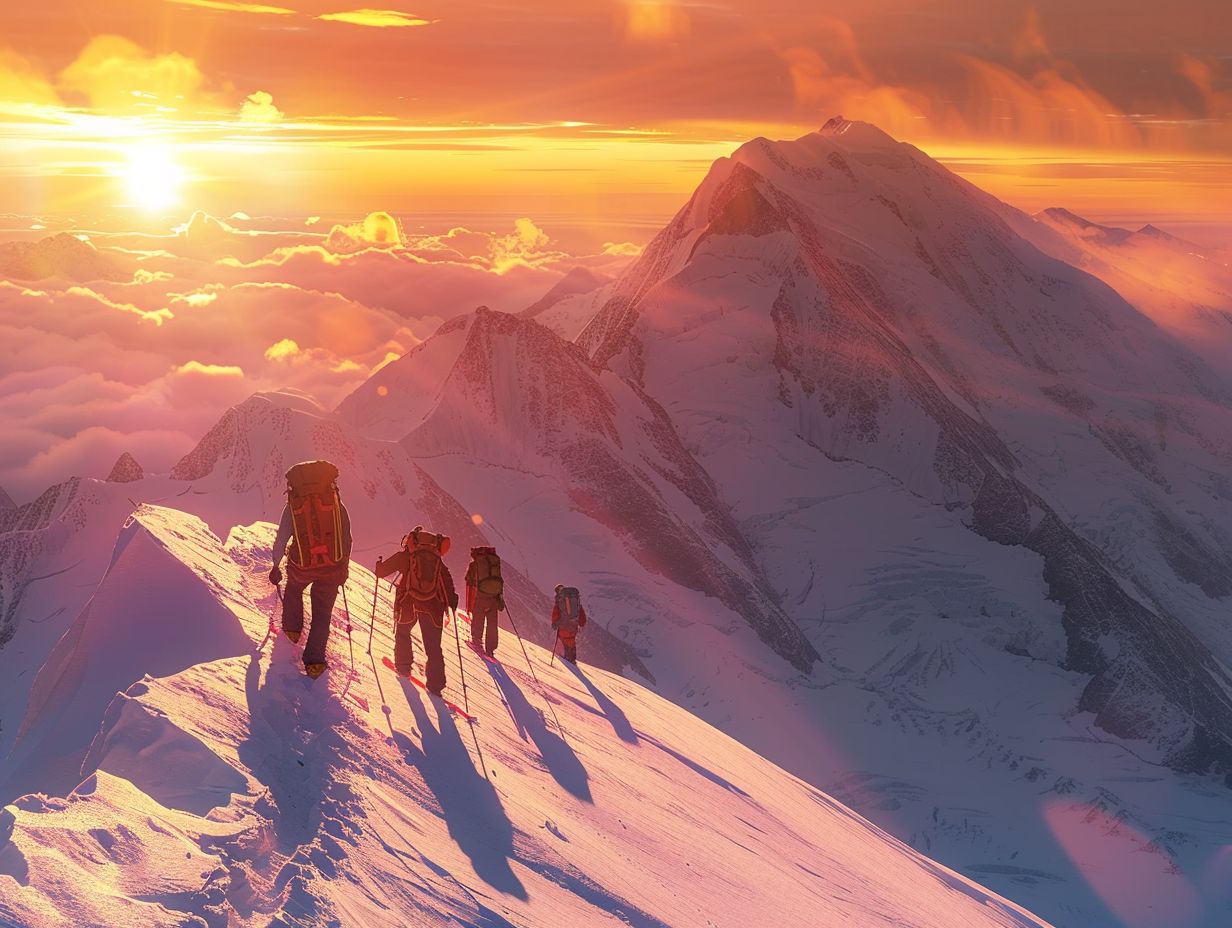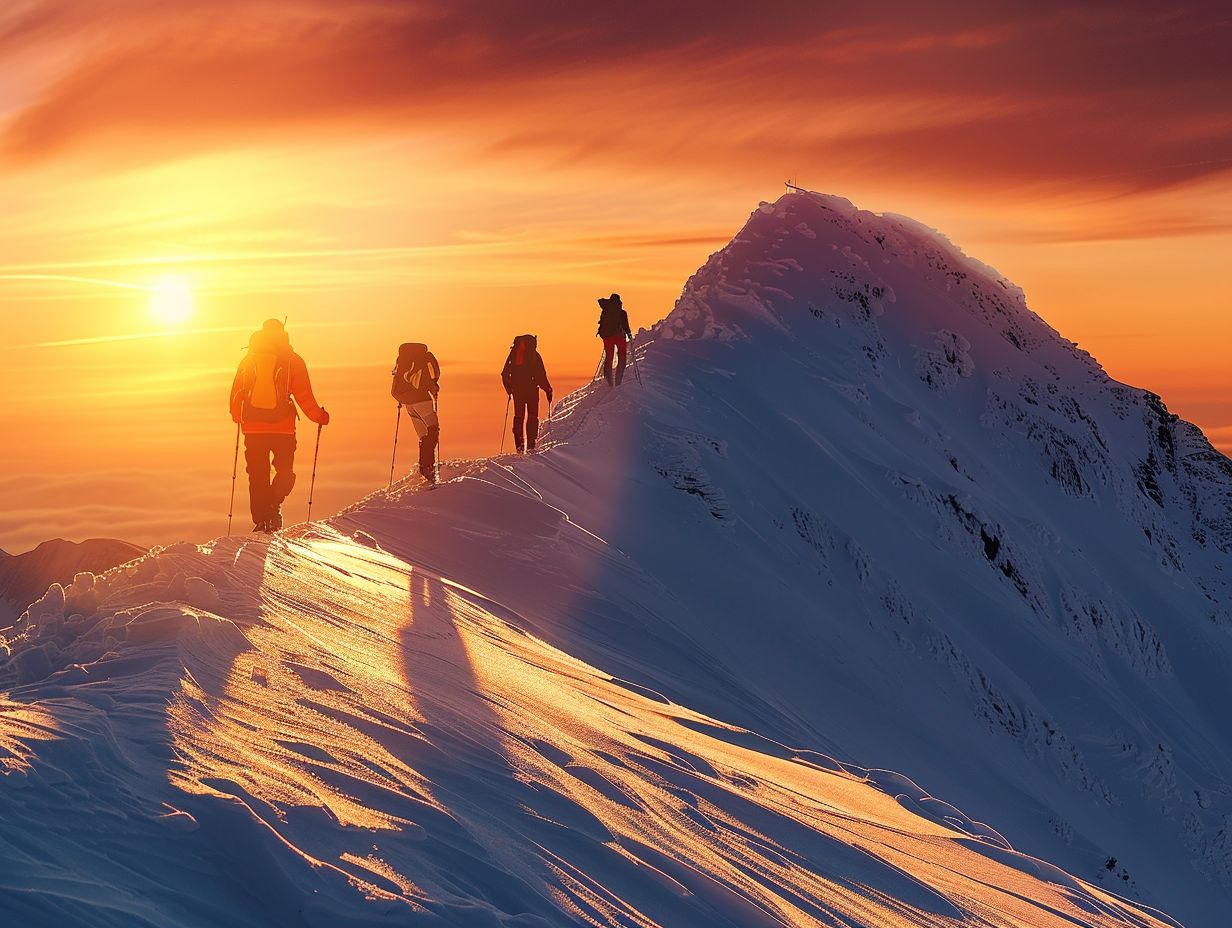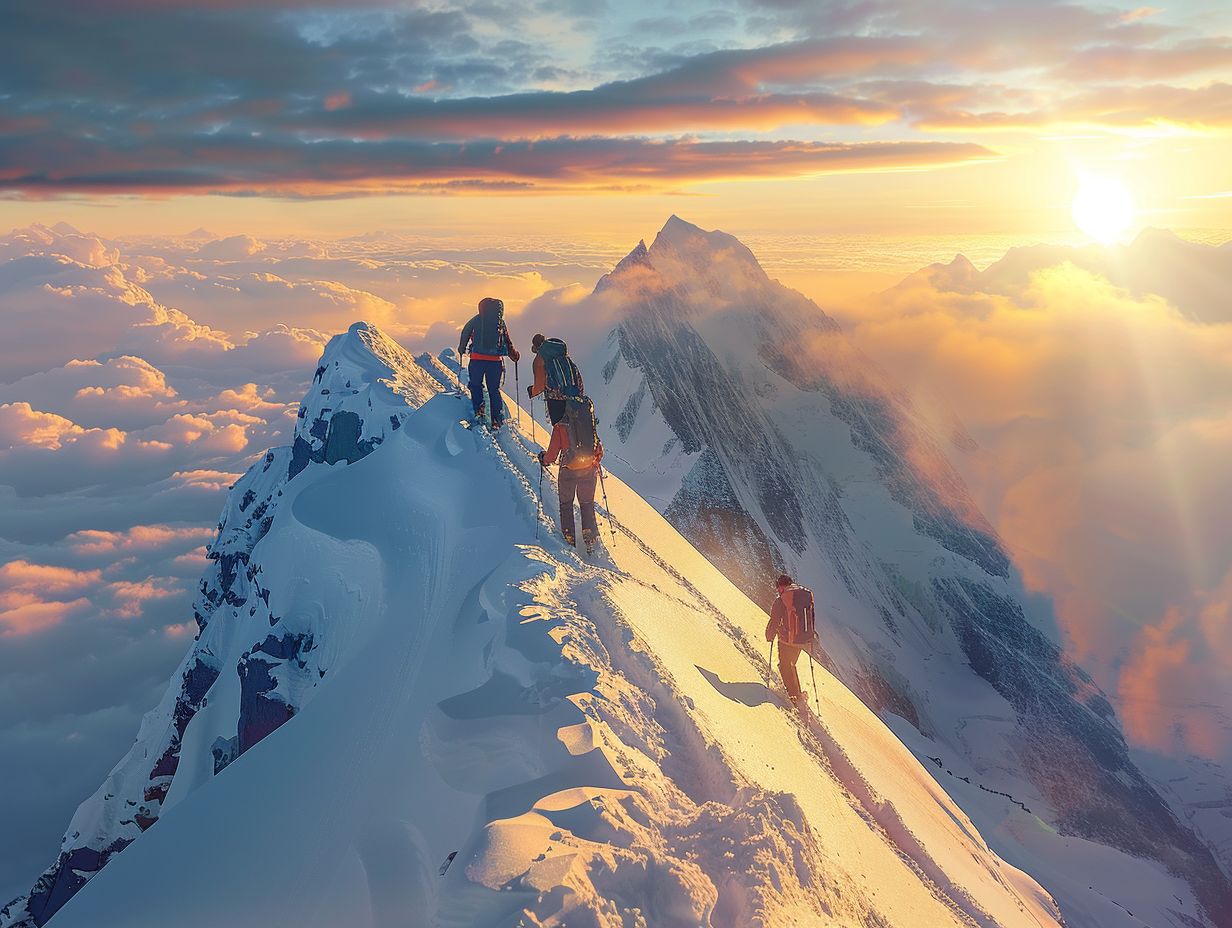
Climbing Kilimanjaro In December
Looking to conquer the iconic Mount Kilimanjaro this December? This article has got you covered!
Discover why December is the perfect time to climb, explore the different routes available, and get essential preparation tips and safety measures for your journey.
Whether you’re a seasoned climber or a first-timer, we’ve got the dos and don’ts to ensure a successful and safe trek to the summit. Let’s dive in!
Key Takeaways:

- December is the best month to climb Kilimanjaro due to favorable weather conditions, lower crowds, and stunning views.
- The Machame, Lemosho, and Rongai routes are recommended for December climbs, with the Northern Circuit being the newest and most scenic option.
- Proper physical training, acclimatization, and packing essentials are key preparation measures, while hiring a guide and prioritizing safety is crucial for a successful December climb on Kilimanjaro.
Why Climb Kilimanjaro in December?
Climbing Kilimanjaro in December offers a unique experience as it coincides with the summer season in Tanzania. Celebrating Christmas and welcoming the New Year atop.
1. Weather Conditions
Climbing Kilimanjaro in December means encountering the rainy season. It is essential to be prepared for varying weather conditions, including potential rain, and fluctuations in temperatures.
During this time, hikers often experience frequent showers and thunderstorms, which can make the trails slippery and more challenging to navigate.
The rainfall also contributes to lush vegetation, adding a picturesque element to the landscape. Temperatures on the mountain can vary greatly, from hot and humid at lower altitudes to freezing cold.
Hikers must pack accordingly, with waterproof gear and clothing layers to adjust to the changing climate. Proper rain gear such as jackets and pants is crucial to stay dry and comfortable.
2. Lower Crowds
One of the advantages of climbing Kilimanjaro in December is the lower number of hikers on the trails. This can provide a more serene and personal climbing experience.
With fewer crowds, you can enjoy the sense of space and tranquility as you ascend the mighty mountain. The crisp, clear December air adds a refreshing touch to your trek.
Encountering fewer hikers means you have more opportunities to connect with nature and absorb the peace that envelops the slopes.
Exploring Kilimanjaro in December grants you a chance to witness the landscape in a quieter, almost meditative state, offering a unique perspective compared to busier climbing seasons.
3. Scenery and Views
In December, the snow-capped peak of Kilimanjaro presents a breathtaking sight, surrounding landscape is a vision of stark beauty, with snow-covered slopes contrasting against the clear blue skies.
As climbers ascend, they are treated to sweeping vistas of the vast plains below and the surrounding mountain ranges that stretch to the horizon.
The play of light and shadow on the rugged terrain creates a mesmerizing spectacle, especially during sunrise and sunset, casting the mountain in a golden hue.
What Are the Different Routes to Climb Kilimanjaro?
There are various routes to climb Kilimanjaro, each offering a unique experience. Some popular routes include the Marangu Route, Rongai Route, and the Northern Circuit Routes, all providing different challenges and scenic views.
1. Marangu Route

The Marangu Route, also known as the ‘Coca-Cola Route,’ is a popular choice for hikers seeking a comfortable trek.
This iconic trail in Kilimanjaro National Park, Tanzania guide trekkers through lush rainforests, moorlands, and sweeping alpine deserts.
The huts on this route provide a welcome respite and a step up in comfort compared to camping, offering bunk beds, comfortable dining spaces, and even basic amenities like bathrooms.
With a duration of about 5-6 days, the Marangu Route is considered one of the quicker ascents up Kilimanjaro, attracting hikers looking for a more direct approach to the summit.
One of the main advantages of the Marangu Route is its gentle gradient and well-defined paths, making it an attractive option for those who prefer a more straightforward and less strenuous trek.
2. Machame Route
The Machame Route, also known as the ‘Whiskey Route,’ is renowned for its stunning scenic views, favorite among adventurers for its challenging terrain and rewarding panoramas.
The Machame Route, situated on the southern slopes of Kilimanjaro, offers climbers the opportunity to experience changing ecosystems, starting in lush rainforest and culminating in barren alpine deserts.
As trekkers ascend, they witness the captivating beauty of the Shira Plateau and the iconic Barranco Wall.
The challenge of navigating steep ridges and valleys and the thrill of reaching the summit make the Machame Route a truly unforgettable adventure.
3. Lemosho Route
The Lemosho Route is known for its diverse landscapes and Arctic-like temperatures at higher altitudes. This route provides hikers with a secluded and pristine climbing experience, away from the crowds.
The Lemosho Route predominantly features a breathtaking variety of terrain, ranging from lush rainforests to alpine deserts, offering trekkers a true feast for the senses.
As climbers ascend, they witness the stunning transition from dense vegetation to barren landscapes, making each step a unique adventure.
The extreme temperature shifts, typical of high altitudes, present both a challenge and a marvel, as individuals navigate through freezing conditions to reach the summit.
This exclusivity allows climbers to immerse themselves in the serene beauty of the mountain, undisturbed by the hustle and bustle of other routes.
The isolation provides a sense of solitude and tranquility, making the journey a deeply personal and introspective experience for those seeking a connection with nature.
4. Rongai Route
The Rongai Route is a less crowded option for climbers, offering a more remote and peaceful trek. Many hikers choose this route for its gradual ascent, diverse scenery, and the expertise of local tour.
One of the defining characteristics of the Rongai Route is its tranquility, providing a sense of solitude amidst the vastness of the mountain.
Unlike the busier trails, this path allows climbers to immerse themselves in the natural beauty of Kilimanjaro without the distractions of large crowds.
The gradual incline of the Rongai Route makes it a popular choice for those seeking a more manageable climbing experience. This gentle ascent allows trekkers to acclimatize effectively.
The scenic diversity along the Rongai Route is stunning, offering panoramic views of both the Kenyan plains and the Tanzanian wilderness.
From lush rainforests to alpine deserts, climbers are treated to a visual feast that evolves with each step of the journey. Local tour operators play a crucial role in ensuring safety.
Their expertise not only guides climbers through the challenging terrain but also provides insights into the cultural and natural significance of Mount Kilimanjaro, enriching the overall adventure.
5. Northern Circuit Route
The Northern Circuit Route is the longest and most scenic route on Kilimanjaro, offering unparalleled views of the mountain and the opportunity to combine the climb with a safari experience.
Spanning over approximately 97 kilometers, this route typically takes around 9-10 days to complete, allowing climbers to acclimatize gradually to the altitude.
The Northern Circuit is known for its diverse landscapes, ranging from lush rainforests to alpine deserts, providing climbers with a unique journey through different ecosystems.
This route is less crowded than some of the other paths up the mountain, offering a more tranquil and secluded experience for those seeking a quieter climb.
The stunning vistas along the way make it a favorite for photographers and nature enthusiasts alike.
What is the Best Way to Prepare for Climbing Kilimanjaro in December?
Preparing for a Kilimanjaro climb in December requires physical training, acclimatization to high altitudes, and packing essential gear for the journey.
1. Physical Training
Physical training is vital when preparing for a Kilimanjaro climb in December. It helps build stamina, endurance, and strength required to tackle the challenging terrains and high altitudes of the mountain.
2. Acclimatization

It involves gradual exposure to higher altitudes to allow the body to adjust to decreased oxygen levels and reduce the risk of altitude sickness.
During acclimatization, climbers ascend slowly, giving their bodies time to acclimate to the changing environment.
Climbers also focus on staying hydrated, maintaining a proper diet, and getting enough rest to support their bodies during this taxing journey.
One essential technique during acclimatization is the ‘climb high, sleep low’ approach, where climbers ascend to higher altitudes during the day but return to sleep at a lower elevation.
This method aids in the body’s adaptation to higher altitudes without overexertion.
3. Packing Essentials
Ensuring you have the right packing essentials for your December Kilimanjaro climb is crucial, especially when facing Arctic temperatures at higher elevations.
Items like thermal clothing, high-quality boots, and proper gear are essential for a safe and comfortable ascent.
When planning for your Kilimanjaro adventure in December, it’s vital to prioritize warm and moisture-wicking thermal clothing to combat the freezing temperatures you’ll encounter.
Investing in high-quality boots, designed for rugged terrains and long hikes, can prevent blisters and provide the necessary grip for challenging paths.
Don’t overlook the significance of carrying essential equipment like trekking poles, headlamps, and hydration systems that are essential for a successful climb.
What Are the Safety Measures for Climbing Kilimanjaro in December?
Safety is paramount when climbing Kilimanjaro in December. Hiring a professional guide, ensuring proper gear and equipment, and paying attention to your body’s signals are crucial safety measures to follow during the ascent.
1. Hiring a Professional Guide
In December, it is advisable to hire a professional guide when climbing Kilimanjaro. Expert guides from reputable tour operators ensure a safe journey.
Professional guides bring a wealth of experience and knowledge to the journey, including familiarity with the terrain, weather patterns, and potential challenges that climbers may face.
They are trained to handle emergency situations, ensuring quick and effective responses in case of any unforeseen circumstances. Guides also help climbers acclimatize properly.
Their assistance not only boosts safety but also adds a layer of convenience and comfort, allowing climbers to focus on enjoying the majestic views and reaching the summit successfully.
2. Proper Gear and Equipment
Having the proper gear and equipment is essential. Items like insulated clothing, sturdy boots, trekking poles, and high-altitude gear are crucial for comfort, safety, and success.
Insulated clothing is paramount to combat the freezing temperatures, sturdy boots with good ankle support provide stability on rocky terrain, reducing the risk of ankle injuries.
Trekking poles offer balance and support, especially on steep ascents and descents, easing the strain on leg muscles.
High-altitude gear, including oxygen bottles and masks, helps climbers acclimatize to the thin air, mitigating the effects of altitude sickness.
3. Listening to Your Body
When climbing Kilimanjaro in December, it is vital to listen to your body and recognize its signals. Pay attention to signs of altitude sickness, fatigue, or discomfort, and communicate any concerns.
Ensuring proper hydration and nutrition can help prevent altitude-related issues. Regular check-ins with your body can help you adjust your pace and rest accordingly.
Remember that your body communicates through aches, pains, and energy levels, signaling when adjustments are necessary. By acknowledging and heeding these signals, you can mitigate risks.
What Are the Dos and Don’ts for Climbing Kilimanjaro in December?

When climbing Kilimanjaro in December, adhering to certain dos and don’ts can enhance your climbing experience, ensure safety, and contribute to a successful summit.
Following the guidance of tour operators and experienced climbers is key to a fulfilling journey. One of the essential dos is to acclimatize properly to the altitude by taking it slow.
Do also ensure you have proper gear for cold weather, including layers, insulated clothing, and good quality boots. Don’t underestimate the physical demands of the climb.
Don’t ignore the signs of altitude sickness; listen to your body and inform your guides immediately if you experience symptoms. Do follow the ‘Leave No Trace’ principles to preserve the environment.
Do drink plenty of water to stay hydrated and minimize the risk of altitude-related illnesses.
Frequently Asked Questions
1. What is the weather like when climbing Kilimanjaro in December?
A: The weather in December can be unpredictable on Kilimanjaro, with temperatures ranging from below freezing at night to mild during the day. It is important to be prepared for both cold and warm weather while climbing.
2. What type of gear is recommended for climbing Kilimanjaro in December?
A: It is recommended to bring warm, waterproof clothing and a good sleeping bag for the cold nights. Proper hiking boots and trekking poles are also essential for navigating the terrain. A detailed gear list can be provided by your tour company.
3. Is climbing Kilimanjaro in December more challenging than other times of the year?
A: Climbing Kilimanjaro in December can be more challenging due to the weather conditions. The trails can be slippery and the nights can be extremely cold. However, with proper preparation and a good guide, it is still a feasible and enjoyable adventure.
4. What is the altitude sickness risk when climbing Kilimanjaro in December?
A: Altitude sickness is a risk when climbing Kilimanjaro at any time of the year. In December, the colder temperatures and potentially icy trails may increase the risk. It is important to acclimatize properly and listen to your body’s signals.
5. Are there any special events or celebrations on Kilimanjaro in December?
A: There are no specific events or celebrations on Kilimanjaro in December, but you may encounter other climbers celebrating the holiday season on the mountain. It can be a unique and festive experience to celebrate the holidays at such a high altitude.
6. What is the best route for climbing Kilimanjaro in December?
A: The best route for climbing Kilimanjaro in December depends on your personal preferences and abilities. The Marangu and Rongai routes are popular options during this time, as they offer warmer and drier conditions. However, the Machame and Lemosho routes also provide beautiful views and may be less crowded.